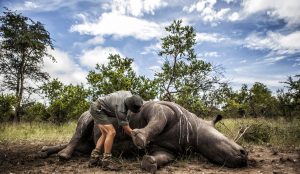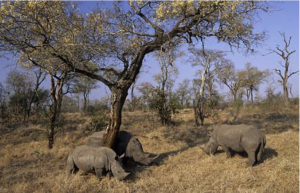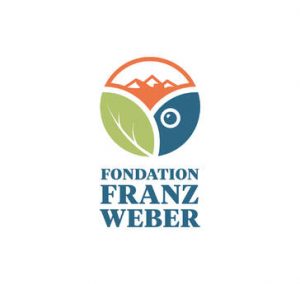By Emmanuel Koro. Originally published in The Herald.
Against a background where it has been losing approximately 3 394 rhinos annually to poaching, with one rhino being killed every eight hours, South Africa has taken the lead in a new rhino conservation approach that no one can stop now and in the future.
The unprecedented Internet technology-powered rhino horn sales pioneered in September this year by the world’s biggest rhino breeder (who single handedly breeds more rhinos than Kenya), Mr John Hume of South Africa, will potentially help African rhino range states and breeders to sell their stockpiled rhino horns and use the money to fight rhino poaching.
If the online rhino horns sales continue to be conducted within both the laws of South Africa and international rhino horn trade regulations; for personal needs; as happened in the September 2017 — it will forever represent a new rhino conservation approach, centred on trade not aid.
For the past 42 years (since 1975), the animal rights movement has continued to block international rhino horn trade, claiming that if permitted it would trigger an increase in levels of rhino poaching. The truth as we have learnt from all the documented trends on rhino poaching is that the rhino horn trade ban has never saved a single rhino since it was imposed 42 years ago.
Instead, the international rhino horn trade ban has created a shortage of rhino horn supply to markets that need it and it turn increased its demand worldwide, leaving rhino poaching as the only means to get the horn to markets that always need it for different personal needs, worldwide.
Unfortunately, African rhino range states, along with pro-sustainable use NGOs had always argued without success, that trade in rhino horn would help incentivise its conservation by communities neighbouring national parks and game reserves.
With trade benefits from a CITES carefully and strictly controlled trade in rhino horn; the rural communities would not see the need to collaborate with poachers. Sadly, the ongoing trade ban on rhino horn for commercial purposed has not brought them the long-awaited socioeconomic benefits from the rhino.
Therefore, these rural communities currently view the rhino as a pest because it continues to destroy their crops and further threaten them and their loved ones with death and physical injury, when they wander into their community.
It is an open secret that under this status quo where the rhino is bringing costs and not benefits, the rural communities are currently being forced to collaborate with poachers in exchange of small amounts of money that never quench their thirst for more and in the process; more and more rhinos continue to be killed by poachers.
Nevertheless, African rhino ranges states, together with their rhino breeders are becoming more hopeful that soon there could be an opportunity to trade in rhino horn, using other available and CITES acceptable trade options such as the option to trade for non-commercial purposes and meet people’s personal needs for the rhino horn.
When conservation history books are correctly written, it would be known that African range states’ argument for trade in rhino horn to save the rhino, was won online when Mr Hume — the world’s biggest rhino breeder successfully traded for the first time; under very difficult circumstances ranging from court battles and opposition from animal rights groups.
The unprecedented online international rhino horn means that other rhino breeders and African rhino range states can also as start marketing and conducting online sales of their stockpiled rhino horns to as many people worldwide who have always wanted to individually buy rhino for personal use.
This groundbreaking online international rhino horn trade could be the saviour of African range states’ rhino population, but only if it is done carefully and correctly, within the CITES framework regulations.
From now onwards rhino breeders and African range states can begin to make the money they have always needed for rhino conservation purposes as well as the socioeconomic development of communities neighbouring national parks and game reserves.
This in turn would incentivise rhino conservation by rural communities. Africa has always argued that use it or lose it and that if it (the rhino) does not pay it does not stay. Now the rhino can start paying through online trade in its horn.
Therefore, we are optimistic that it (the rhino) can now stay — get saved from extinction. It seems the online trade could in the long-run “hand” African range states and the world a long-sought-after victory for rhino conservation, with South Africa and Mr Hume being credited as the pioneers of this new trade-based rhino conservation approach.
Rhino conservation could never work until the African communities could start selling their rhino horn just like the communities in South America are now selling their vicuña that has a similar history to the CITES rhino horn international ban but it is now being traded. Following CITES’ lifting of the international trade ban on vicuña skin and fur, the South American vicuña population has since increased from 5 000 about 40 years ago, to a total population of 450 000 now.
The secret was in making the South American communities see the incentive to conserve the vicuña that they are now benefiting from through trade. They now sustainably shear the vicuña fur and have stopped poaching it for its skin and fur as happened in the past.
For many years, the UN Convention on International Trade in Endangered Species of Wild Fauna and Flora (CITES) has permitted the sale of a few horns per person, to meet their personal needs such as health but the sales could not be conducted in large quantities without Internet technology.
Through, online rhino horn sales it is now possible to sell many rhino horns to thousands of individuals globally who meet the trade requirements, at the click of the computer button as long as they meet the trade requirements.
This has created a big opportunity for those who want to dispose of their thousands tonnes of stockpiled and costly to manage legally harvested rhino horn through selling them quickly online.
With Mr Hume having recently offered free-of-charge rhino breeding training for Southern African rural communities, it means that we could very well start breeding rhinos at the scale that we do our cattle and ‘kiss’ goodbye to the rhino extinction threat.
Incidentally, white rhinos are bred just the way we do cattle. This means it would be easy to train rural communities from the Southern African rhino range states on how to breed the white rhino.
Related to the issue of potential increase in rhino breeding and in turn rhino population, this writer recently observed with interest, comments made by an official of the Pretoria-based Agri SA (South African Agricultural Association) that “if Mr Hume conducts his online rhino horn sales successfully, it could very soon make some South African cattle farmers consider white rhino breeding”.
The good news is that such a switch-over from cattle to rhino breeding would once again increase the rhino survival opportunities. It is these same farmers who are breeding cattle that never get extinct despite being slaughtered in their millions in abattoirs, for their meat daily in South Africa.
Therefore, the more the farmers become involved in breeding thousands of rhinos that would be traded under strict CITES and national trade regulations, the greater the chances to increase the survival of the rhino.
Emmanuel Koro is a Johannesburg-based and international award-winning environmental journalist.



